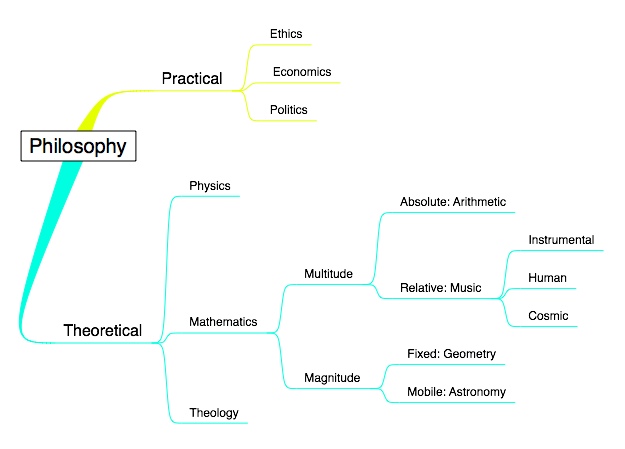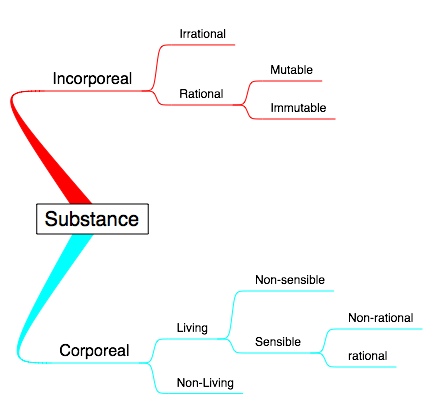
Natural Science - Year I
Unit 18: Overview of Medieval and Renaissance Science Issues

Science Weblecture for Unit 18
| This Unit's | Homework Page | History Lecture | Science Lecture | Lab | Parents' Notes |
Science Lecture for Unit 18: Introduction to Medieval and Renaissance Science
For Class
For Class
- Topic area: Overview of the history of science from 0 ce to 1700 ce
- Terms and concepts to know: To be discovered this spring!
- See historical period(s): Quest for a Comprehensive World View
Outline/Summary
Looking Ahead to the Scientific Revolution
It is useful to start to start a new section of our studies by creating a roadmap that identifies the most important stops along our route, and gives us some idea of where interesting turnoffs might lie.
A Preview of the period from 0 ce to 1700 ce
| Period | Major Contributors | Contributions |
|---|---|---|
| Roman Empire: Rise of Christianity 0 ce - 600 ce |
Christian Fathers: Clement of Alexandria, Origen, Augustine, Boethius, Isidore | New relationship between philosophy and religion |
| Rise of Islam 700 ce - 1200 ce |
al-Khwarizmi, al-Farghani (Alfarganus), inb al-Haytham (Alhazen) , Ibn Sina (Avicenna), Inb Rashd (Averroes), others | Advances in Algebra, Geometry, Optics, Medicine, Astronomy |
| Medieval Cosmology 1000 ce - 1400 ce |
Gerbert, Gerard of Cremona, William Moerbecke, Thomas Aquinas, Dante Alighieri, Geoffrey Chaucer | Attempts to reconcile Aristotelian physical principles with observation |
| Italian Renaissance 1400-1550 ce |
Leonardo da Vinci, Andreas Vesalius | Accurate observations: Scientific illustration, especially anatomy |
| Scientific Revolution in biology 1400-1600 ce |
William Harvey, Marcello Malpighi,Zacharias Jansen, Robert Hooke, Anthony van Leeuwenhoek | Classification of new organisms, application of physical principles to biological processes, use of microscope |
| Scientific Revolution in astronomy 1400-1700 ce |
Nicolai Copernicus, Tycho Brahe, Johannes Kepler, John Dee, Giordano Bruno, Galileo Galilei | Heliocentric solar system, elliptical orbits, telescopic observations |
| Scientific Revolution in mechanics 1400-1700 ce |
Galileo Galilei, Isaac Newton, William Gilbert | Physical law: motion, inertia, magnetism, and gravitation; rise of scientific societies |
The Divisio Scientiarum
In a way, the medieval philosophers whom we will meet next time -- the encyclopaedists -- are the first real information technology specialists. With a growing dependence on written documents required by the Roman legal system, they were faced with a new problem: How should information and knowledge be organized? What criteria should be used in limiting subject matter by method of investigation? How do we identify the relationships between two different areas of observation and experience?
Aristotle had provided some guidance in his works on logic. He divided knowledge into theoretical and practical areas. Practical information was derived from actual experience, and included not only things like pottery making, taught by direct demonstration, but also what we would now call social science. Theoretical knowledge was derived by applying first principles of philosophy, and making logical conclusions about different areas of nature and behavior. Politics is practical, ethics is theoretical.
Aristotle went further and declared that the methods of one science could not be applied to the objects of another science. The theoretical constructs of geometry — points, lines, and circles — had no real application to the paths marked out by the physical planets in their courses to actual space. Aristotle thus separated physical sciences completely from mathematics, a division that was to cause constant confusion on methods appropriate to astronomy throughout the middle ages until Newton finally resolved the question by stating the fundamental law of gravity as a mathematical relationship.
We can see this confusion in one of the early divisions of science proposed by Boethius. Here, Boethius follows Aristotle's division of knowledge into theoretical and practical branches, but under theoretical mathematics, he places for sciences: arithmetic, geometry, music, and astronomy, a group later known as the quadrivium.

But the struggle for organization doesn't stop there. The diagram above categorizes knowledge itself, not the things known. To study nature, we must understand the organization of nature itself. Again, Boethius tries to set out a division of substances that reflects reality, by recognizing corporeal substances (those things made of matter) and non-corporeal substances (spirit or soul, for example), a division which has serious ramifications for understanding accidents and essence and the divine and human natures of Jesus Christ.

During the middle ages and into the Renaissance, there was a constant tension between these two ways of looking at the world, directly and through the filter of human knowledge. Some thought that the division of knowledge should follow the division of nature (an ontological approach to knowledge). Others thought that knowledge should be organized to support teaching (a pedagogical approach), with the easiest subjects, generally those least abstract, presented first. We tend to follow this in organizing high school science curricula to move from biology (least abstract), through chemistry (more abstract), to physics (most abstract). Others felt that knowledge should be organized with the most fundamental areas presented in primary place, and the derived sciences below these. In this organization, we would teach physics first, then chemistry, then biology, since biology depends upon the fundamentals of chemical reactions, which in turn depend upon the forces encountered in moving atomic particles through electromagnetic fields.
Note that in each of these organization methods, though, a subject would appear in only one position, rather like the method we use in biology to classify an organism in a particular domain-kingdom-phylum-class-order-family-genus-species. Overlap with two or more other areas could not be indicated or represented easily in such hierarchical structures.
With the explosion of new methods of presentation (printing, perspective, and proportion) in the late middle ages and early Renaissance, and the influx of new information from the voyages of exploration, the mere amount of subject matter became difficult to manage, and attempts to organize information into strict hierarchies broke down. In many situations, people simply gave up, and created encyclopedias with articles in alphabetical order, which made it easy to look up something, if you already knew its name, but impossible to see how it was related to similar objects.
Study/Discussion Questions:
- How has the use of mathematics in science changed from the time of Aristotle?
- How do we determine the reliability of observational proof?
- How does the way we organize information by subject matter or methods affect our ability to record (store) it? retrieve it? teach it? learn it?
- Should methods of research (e.g., scientific experimentation) be limited to specific subjects, or can any method be applied to any subject?
- How do our religious and cultural priorities affect our organization of knowledge? For example: is the study of philosophy more or less important than the study of theology?
Further Study/On Your Own
- The wikipedia article on science in the middle ages provides a reasonable overview of the medieval period.
© 2005 - 2025 This course is offered through Scholars Online, a non-profit organization supporting classical Christian education through online courses. Permission to copy course content (lessons and labs) for personal study is granted to students currently or formerly enrolled in the course through Scholars Online. Reproduction for any other purpose, without the express written consent of the author, is prohibited.